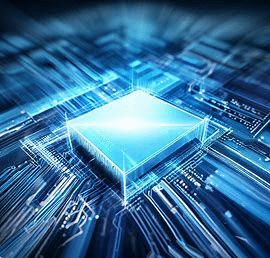Edge computing is a distributed computing paradigm that brings computation and data storage closer to the edge of the network, closer to where the data is being generated. This can improve performance, reduce latency, and increase security.

In a traditional cloud computing architecture, all data is processed and stored in the cloud. This can be inefficient for applications that require real-time responses or that need to process large amounts of data locally. Edge computing addresses these challenges by processing data closer to where it is being generated.
Why is edge computing important?

The amount of data being generated by devices at the edge of the network is growing exponentially. This data can be used for a variety of purposes, such as real-time analytics, machine learning, and augmented reality. However, transmitting this data to the cloud can be expensive and time-consuming. Edge computing can help to address these challenges by processing data closer to where it is being generated.
For example, consider a self-driving car. The car’s sensors generate a large amount of data that needs to be processed in real time to make decisions about how to drive. If the car had to send all of this data to the cloud, it would take too long for the car to make decisions, and it would be more likely to get into an accident. By using edge computing, the car can process the data locally, which makes it possible for it to make decisions in real time.
How does edge computing work?

Edge computing involves deploying computing resources, such as servers, storage, and networking, at the edge of the network. These resources can be located in a variety of places, such as data centers, telecommunications towers, or even on devices themselves.
When a device at the edge of the network needs to access data or perform a computation, it can do so locally, without having to send the data to the cloud. This can improve performance, reduce latency, and increase security.
What are the benefits of edge computing?

There are many benefits to edge computing, including:
Improved performance: Edge computing can improve performance by reducing latency. This is because data does not have to travel as far to reach the computing resources. For example, a self-driving car that uses edge computing can make decisions in real time, which is essential for safety.
Reduced latency: Edge computing can also reduce latency by processing data closer to where it is being generated. This is important for applications that require real-time responses, such as self-driving cars or medical devices. For example, a medical device that uses edge computing can send data to a doctor immediately, which can help to save lives.
Increased security: Edge computing can increase security by keeping data closer to where it is being generated. This makes it more difficult for attackers to access the data. For example, a company that uses edge computing to store its customer data can reduce the risk of a data breach.
Cost savings: Edge computing can also save costs by reducing the amount of data that needs to be sent to the cloud. This can save on bandwidth costs and cloud storage costs. For example, a company that uses edge computing to process its video surveillance data can save money on bandwidth costs.
What are the challenges of edge computing?

There are a few challenges associated with edge computing, including:
Complexity: Edge computing can be complex to deploy and manage. This is because it involves deploying computing resources at a variety of locations. For example, a company that wants to use edge computing to process its video surveillance data would need to deploy edge computing devices at all of its locations.
Security: Edge computing can also be a security challenge. This is because the computing resources at the edge of the network are more likely to be exposed to attack. For example, an attacker could target an edge computing device in order to steal data or disrupt operations.
Standardization: There is no single standard for edge computing. This can make it difficult to deploy and manage edge computing solutions. For example, a company that wants to use edge computing might have to choose from a variety of different edge computing platforms, which can make it difficult to integrate the platform with other systems.
Edge computing is a promising new technology that has the potential to improve performance, reduce latency, and increase security. However, there are still some challenges associated with edge computing, such as complexity and security. As the technology matures, these challenges are likely to be addressed.
click here for more content –> Read New




Leave a Reply